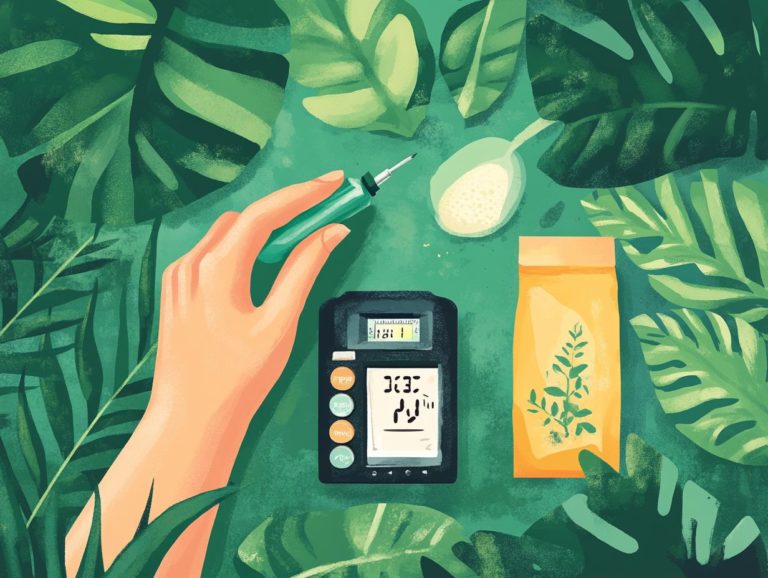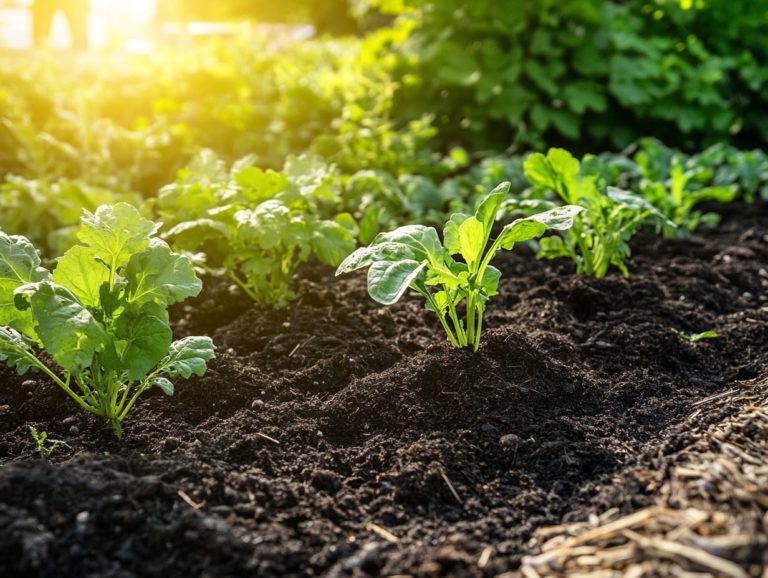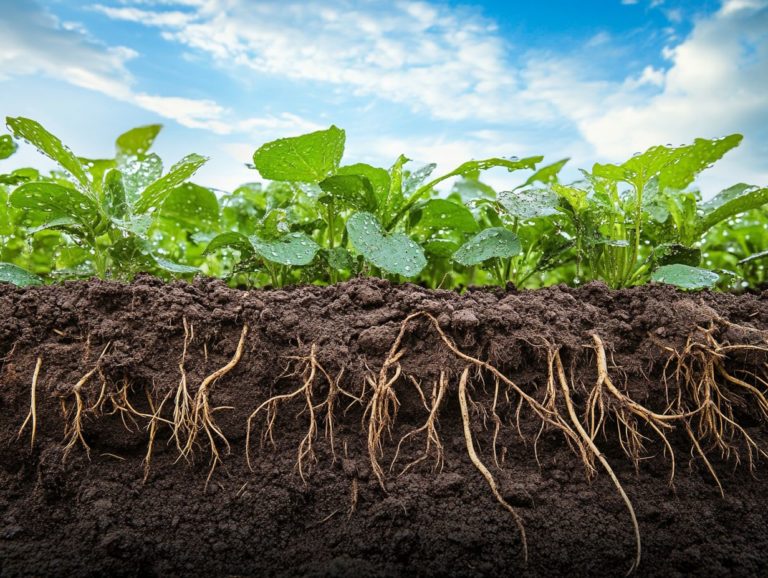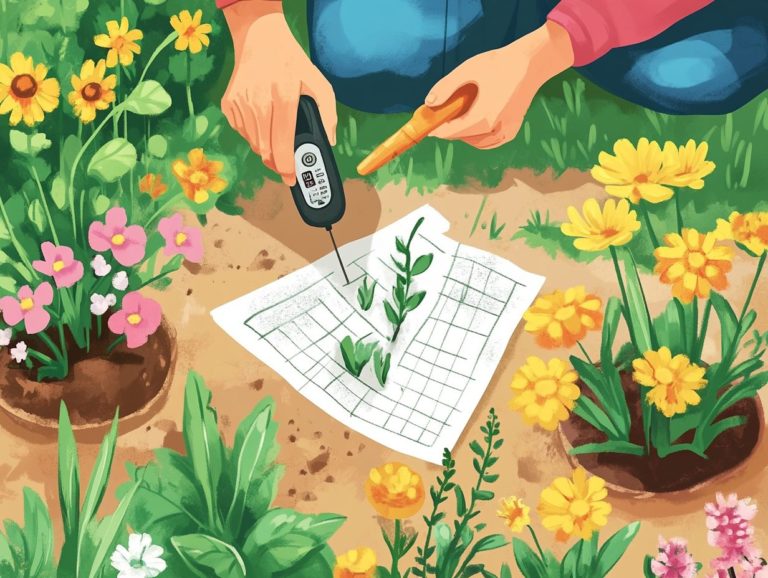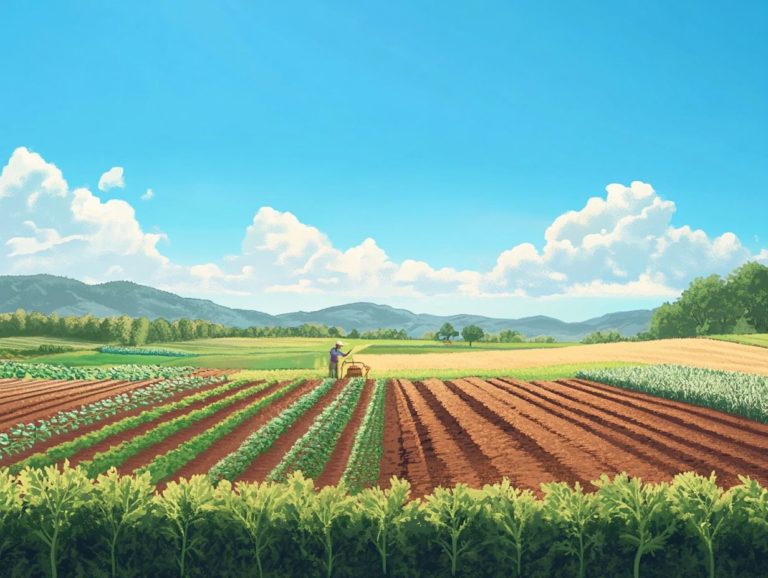4 Methods to Improve Soil Drainage
Good soil drainage is essential for nurturing healthy plants and cultivating a thriving garden. If you ve observed water pooling in your yard or noticed your plants struggling to thrive, it s likely that your soil requires some attention.
This article delves into four effective strategies to enhance soil drainage: incorporating organic matter, creating raised beds, installing drainage pipes, and planting cover crops.
This guide answers key questions about drainage issues and solutions. Immerse yourself in this guide to unlock the potential of your garden s soil!
Contents
- Key Takeaways:
- 1. Adding Organic Matter to the Soil
- 2. Creating Raised Beds
- 3. Installing Drainage Pipes
- 4. Planting Cover Crops
- How to Determine If Your Soil Needs Better Drainage?
- Frequently Asked Questions
- What are the benefits of improving soil drainage?
- What are the 4 methods to improve soil drainage?
- How does adding organic matter improve soil drainage?
- What is a French drain and how does it work?
- Can improving soil drainage also help with erosion control?
- Are there any potential downsides to improving soil drainage?
Key Takeaways:
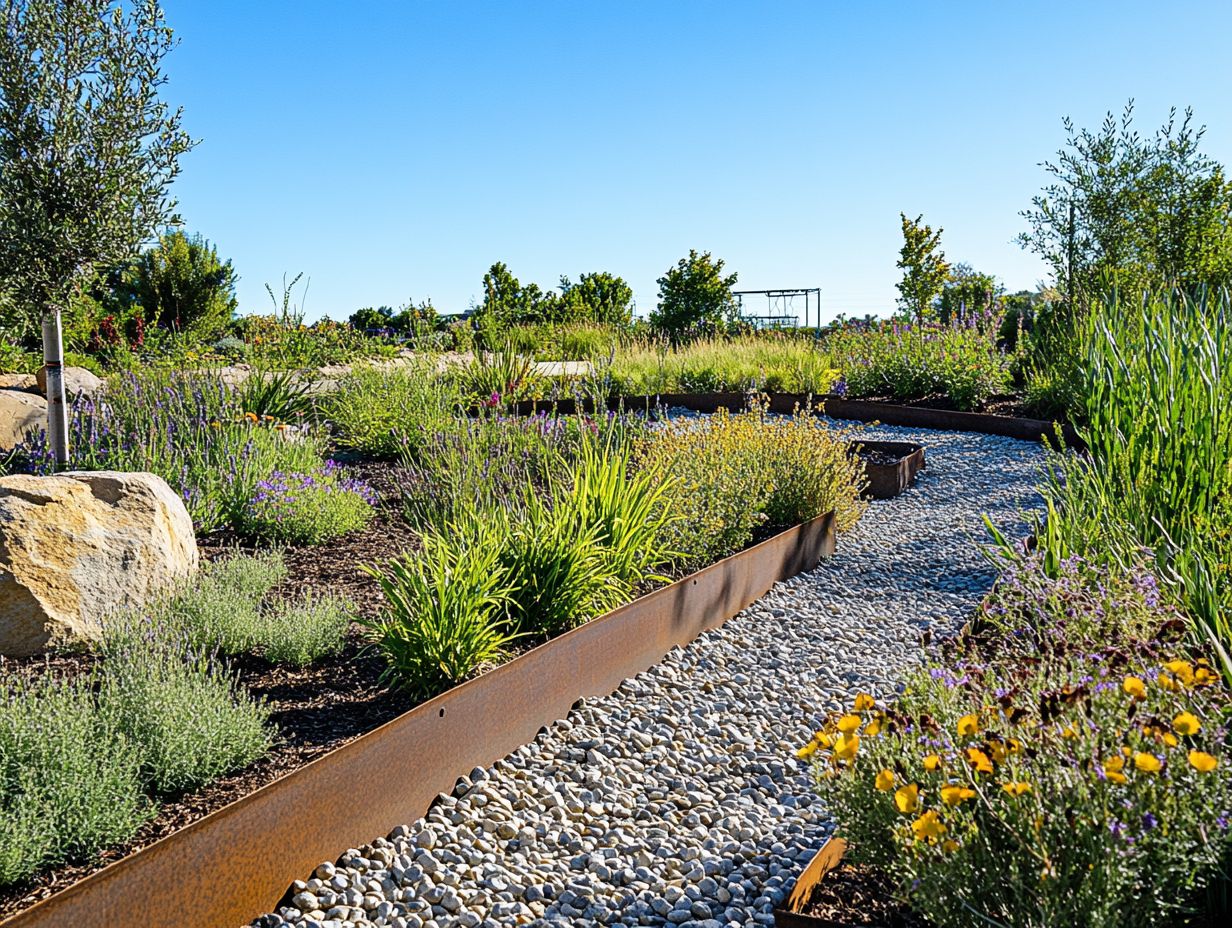
- Adding organic matter to the soil can improve drainage and encourage beneficial microorganisms.
- Creating raised beds elevates the soil for better drainage.
- Installing drainage pipes offers an outlet for excess water.
1. Adding Organic Matter to the Soil
Incorporating organic matter into your soil is essential for enhancing its structure, fertility, and overall plant health. This practice solves common garden problems while nurturing a balanced ecosystem that supports both thriving garden plants and water-loving varieties.
Organic matter, like compost, serves as a game-changer by improving soil drainage and boosting nutrient-holding capacity. This means your plants can access essential minerals more efficiently. To effectively integrate organic matter, simply mix compost or well-rotted leaves into the top layers of your existing soil. This encourages helpful tiny organisms that support a healthy garden.
Don t underestimate the importance of earthworms in your soil health journey. These remarkable creatures aerate the soil and break down organic matter, turning it into nutrients that plant roots can easily absorb. This natural process promotes diversity among plant species and supports overall growth, ensuring that both your flowers and vegetables flourish in a nutrient-rich environment.
2. Creating Raised Beds
Creating raised beds is an exceptional gardening technique that enhances soil drainage and elevates plant health. By providing better soil structure and reducing soil compaction, you ll see a noticeable improvement in your plants’ health right away!
These elevated planting areas offer a remarkable advantage in accessibility, allowing you to tend to your plants without excessive bending, minimizing strain on your back and knees. When designing your raised beds, consider using rot-resistant materials like untreated wood, bricks, or recycled plastic to enhance durability. Aim for a depth of 12 to 18 inches, providing ample space for roots to thrive.
To achieve the perfect filling mix, layer high-quality topsoil, compost, and organic matter. This combination will significantly improve drainage while boosting soil fertility, creating a flourishing garden environment.
3. Installing Drainage Pipes
Installing drainage pipes is essential for effective horticulture, especially in areas where soil drainage poses challenges. This crucial step helps alleviate issues from poor drainage, which can lead to problematic water retention in clay soil, ultimately enhancing the health of your garden plants.
To begin, conduct a thorough site assessment to identify drainage areas, paying close attention to low spots that tend to collect water. Next, position the pipes correctly for optimal flow. This usually involves placing them at a slight slope to facilitate the drainage of excess water.
You ll find a variety of drainage solutions available, ranging from French drains to surface drains, each tailored to different environments and soil types. For example, sandy soils may drain quickly but requires a different strategy compared to heavy clay that retains moisture.
By considering these factors, you can significantly improve overall garden maintenance, leading to healthier and more vibrant plants.
4. Planting Cover Crops

Planting cover crops is a game-changer in organic gardening. It is a sustainable practice that significantly enhances soil health and structure, reduces erosion, and boosts moisture retention.
Not only do these crops enrich soil fertility, but they also promote plant diversity through natural amendments. You ll find that cover crops, ranging from clover to rye and buckwheat, are vital in improving soil quality and drainage.
They break up compacted layers, allowing water to flow more freely. Nitrogen-fixing legumes, like vetch or peas, are particularly helpful for nutrient-poor soils, while deep-rooted species such as daikon radish create channels for moisture and air.
Depending on your climate, you can select the ideal cover crops to thrive. Winter rye works wonders in cooler regions, while sorghum-sudangrass flourishes in warmer climates.
When you combine these cover crops with mulch, you elevate your garden’s resilience. This combination suppresses weeds, retains moisture, and enhances organic matter content.
This leads to richer, more productive soil ready to support your gardening endeavors.
How to Determine If Your Soil Needs Better Drainage?
Determining whether your soil requires better drainage is a mix of looking closely and testing. By assessing moisture levels and spotting signs of soil compaction, you can gain valuable insights into the overall health of your plants.
This will guide you toward effective drainage solutions for optimal growth conditions. Begin by examining your soil after a rain or watering session.
If puddles linger for an extended period, it’s a clear indication of poor drainage. To measure moisture levels, you might employ a soil moisture meter or simply dig a small hole to evaluate the texture and dampness at varying depths.
Symptoms such as stunted plant growth or yellowing leaves can be telltale signs of underlying drainage issues. To enhance drainage, consider the following steps:
- Aerate the soil to improve airflow (make small holes in the soil).
- Incorporate organic matter, like compost, to enhance soil structure.
- Create raised garden beds to facilitate better water flow.
Try these simple strategies! They can effortlessly transform poorly draining soil into a thriving environment for your plants, including 5 ways to encourage water infiltration.
What Are the Common Causes of Poor Soil Drainage?
Common causes of poor soil drainage include high clay content, soil compaction, and inadequate moisture management. These factors can create a multitude of challenges for your garden plants and encourage the presence of pests that thrive in waterlogged conditions.
When your soil is heavy with clay, the particles tend to be tightly packed. This makes it nearly impossible for water to percolate efficiently (flow through the soil). This leads to stagnant water that suffocates plant roots.
Soil compaction, often a result of excessive foot traffic or heavy machinery, further limits air and water movement. This creates an unhealthy environment for your plants’ root systems.
Inadequate moisture management can also be an issue. Poorly timed watering practices can either drown your plants or leave them excessively dry.
To combat these challenges, consider enhancing your soil structure by incorporating organic matter like compost. This not only improves aeration but also boosts drainage.
Implementing solutions such as French drains or raised beds can significantly resolve drainage concerns and promote a flourishing garden environment.
Ready to improve your soil drainage? Start implementing 5 ways to improve your soil’s water retention today and watch your garden thrive!
What Are the Different Types of Organic Matter That Can Be Added to Soil?
You can enhance your garden by adding various types of organic matter like compost, leaf mold, and well-rotted manure to your soil. These additions will boost plant nutrients, improve moisture levels, and foster the development of a healthy soil ecosystem for your plants to thrive.
Incorporating these materials elevates the nutrient-holding capacity of your soil while creating a vibrant environment filled with microbial activity. This activity is vital for breaking down organic materials and slowly releasing nutrients over time. Compost provides a balanced mix of essential nutrients and improves soil structure, allowing your plants to root deeply. Leaf mold enriches the soil with organic matter, enhancing its ability to retain water. Well-rotted manure offers a wealth of nutrients and beneficial microorganisms.
To get the most out of these organic materials, consider layering them into the topsoil or creating a compost pile. This ensures they decompose properly and helps avoid loss of nutrients, which can happen with over-application.
How to Create Raised Beds for Improved Soil Drainage?
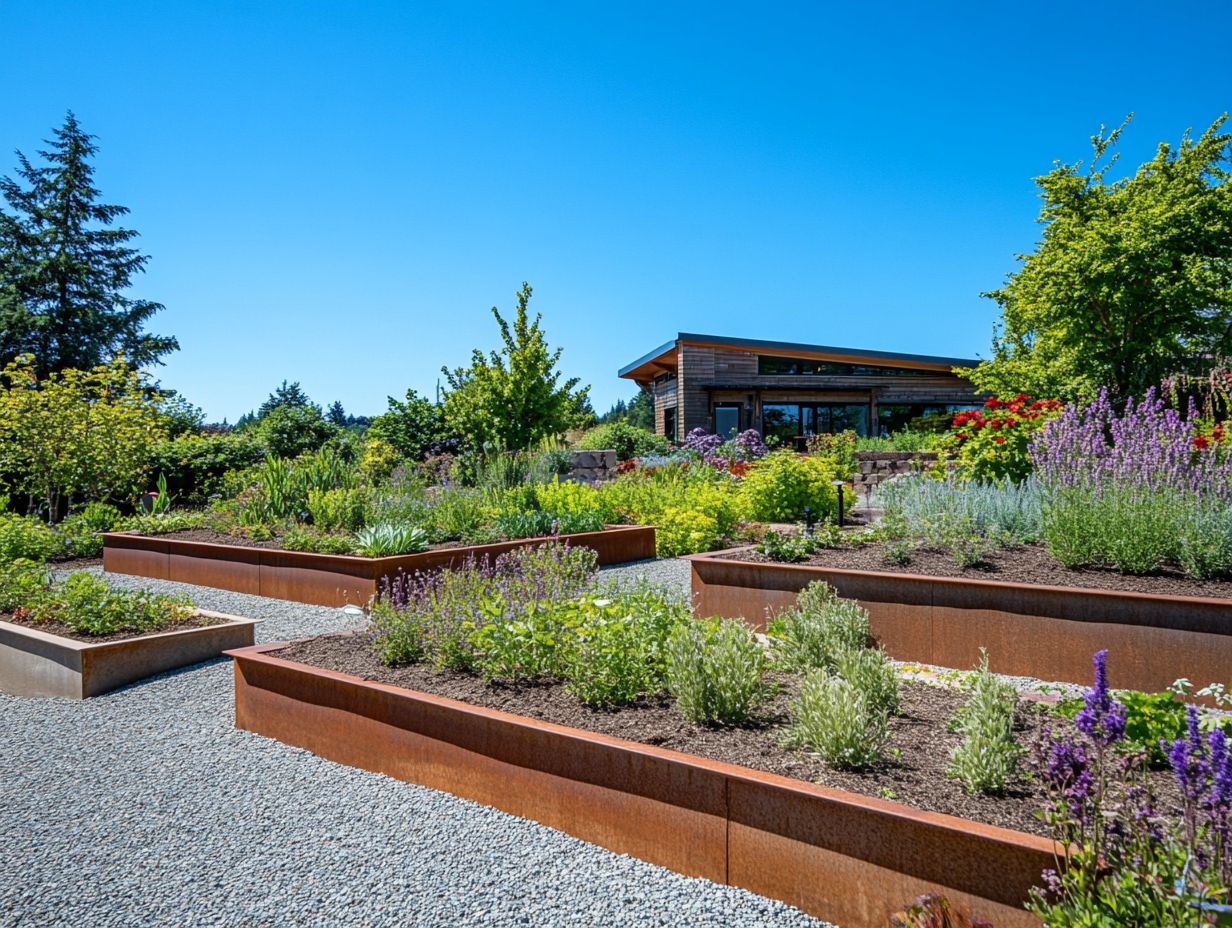
Creating raised beds for improved soil drainage requires thoughtful planning regarding dimensions and materials. Ensure the structure facilitates adequate water flow while combating soil compaction. This fosters an optimal environment for healthy plant roots.
Start by finding that perfect sunny spot where your plants will thrive! Look for a location that basks in sunlight throughout the day and is conveniently accessible for maintenance. Choosing the right materials is essential; consider options like untreated wood, stone, or recycled composite materials, depending on your budget and aesthetic preferences.
Once your beds are constructed, layering mulch will help retain moisture and keep pesky weeds at bay, creating a stable habitat for your plants. Fill the beds with a well-balanced mix of soil, incorporating organic compost and perlite a lightweight volcanic rock that improves soil drainage to enhance drainage and supply the crucial plant nutrients your plants need for robust growth.
How to Install Drainage Pipes in Your Garden?
Installing drainage pipes in your garden demands meticulous planning and execution. You ll want to ensure they re strategically placed in designated drainage areas to effectively manage moisture levels and prevent waterlogging that can jeopardize plant health.
Selecting the right type of drainage pipe is paramount. Options range from PVC to corrugated materials, each offering distinct advantages based on soil type and the volume of water you need to manage. Gathering the right tools like a shovel, level, and pipe cutter will streamline your installation process and enhance your efficiency.
Don t forget to consider the slope when positioning the pipes. A gradient of at least 1% is essential for facilitating proper water flow, keeping standing water at bay and protecting your plants from potential damage in the long run.
Ready to transform your garden? Start today with these easy steps!
What Are the Best Cover Crops for Improving Soil Drainage?
Using cover crops is an effective way to improve soil structure and enhance quality through organic gardening practices. Selecting the right cover crops involves considering varieties that promote plant diversity and better soil management.
Take clover, for example. It s an outstanding choice as it fixes nitrogen in the soil, enriching it for future crops. Its fibrous roots break up compacted layers, allowing water to penetrate more easily. It also supports soil health by encouraging earthworms, which further improve soil structure.
Rye is another excellent option. Its extensive root system creates channels for drainage and its plant material effectively suppresses weeds while preventing soil erosion.
Planting these cover crops in the fall is a smart move for healthier soil by spring. They decompose and release nutrients right when your main growing season kicks off, aligning with effective soil management strategies.
By utilizing these approaches, you not only enhance drainage but also lay the groundwork for stronger subsequent crops, boosting yields and contributing to overall farm sustainability. Don t wait these practices are crucial for thriving gardens today!
Frequently Asked Questions
What are the benefits of improving soil drainage?
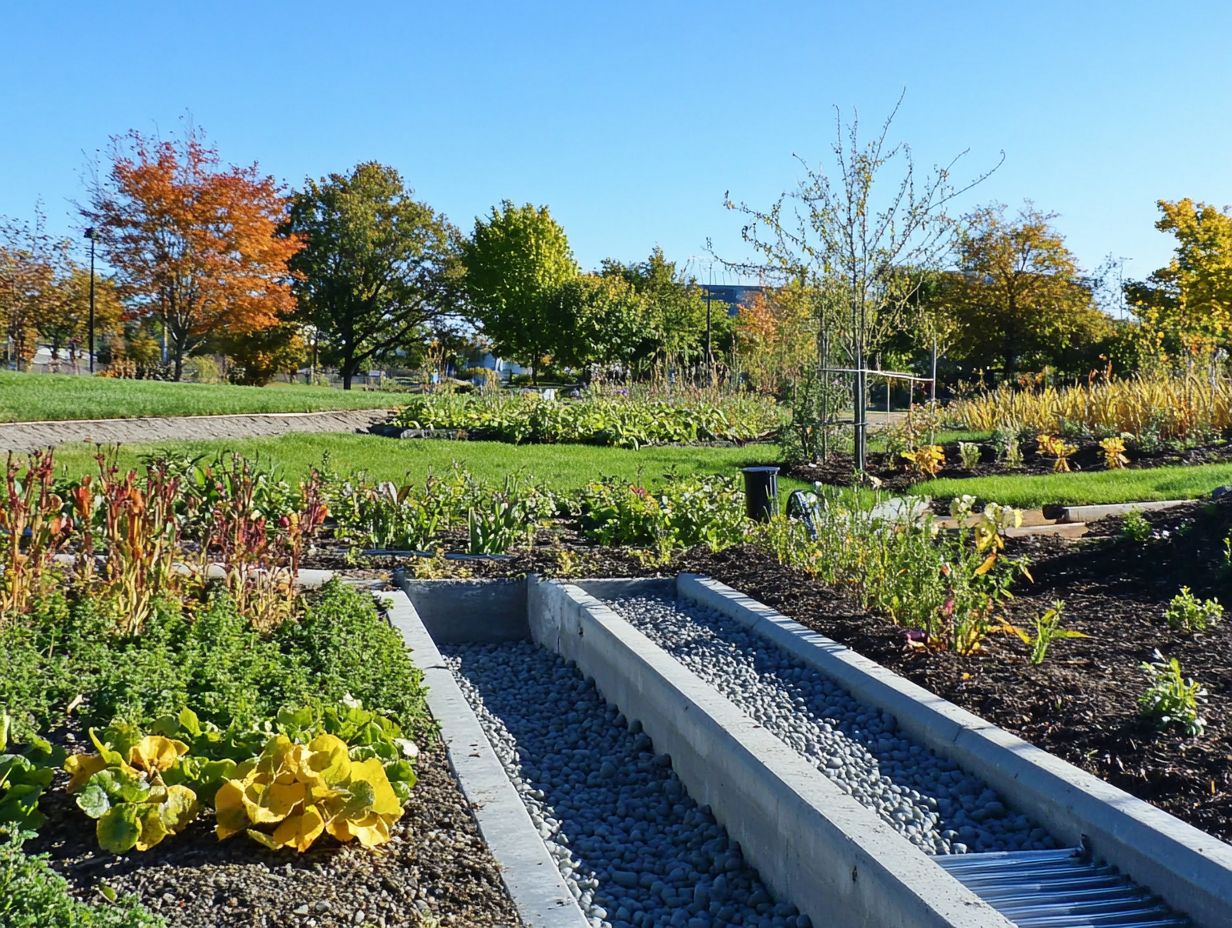
Improving soil drainage can prevent waterlogged soil, increase nutrient availability, and promote healthy root growth for water-loving plants.
What are the 4 methods to improve soil drainage?
- Adding organic matter
- Creating drainage channels
- Installing a French drain
- Using raised beds or mounds, which are effective drainage solutions
How does adding organic matter improve soil drainage?
Adding organic matter, such as compost or aged manure, improves soil structure and increases pore space for better drainage, enhancing overall soil quality.
What is a French drain and how does it work?
A French drain is a trench filled with gravel and a perforated pipe that redirects excess water away from an area. The gravel allows water to flow through and into the pipe, which then carries it to a designated runoff area.
Can improving soil drainage also help with erosion control?
Yes! By improving soil drainage, excess water flows more freely through the soil instead of sitting on top and causing erosion. Additionally, using raised beds or mounds creates barriers for water flow, further preventing erosion.
Are there any potential downsides to improving soil drainage?
One potential downside is that some plants, particularly those that prefer moist soil, may struggle in well-drained soil. It’s crucial to research the specific needs of your plants before making changes to your soil drainage.
Try implementing these cover cropping techniques and share your results for a thriving garden!


